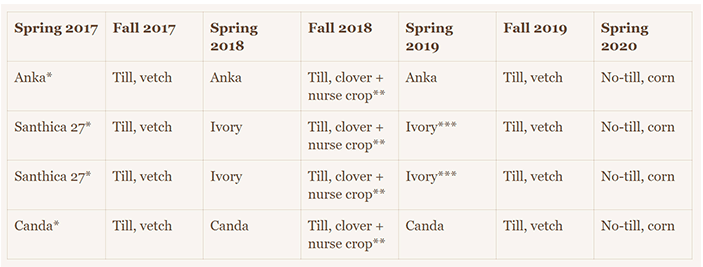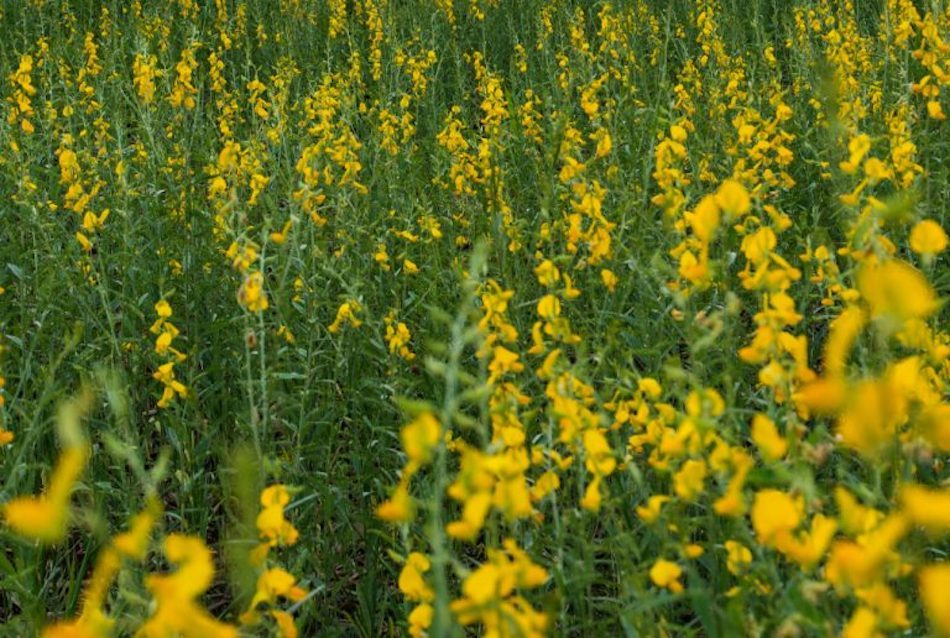Researchers at Rodale Institute have spent the past few years taking a closer look how industrial hemp—especially crops grown for fiber or grain—may fit into farmers’ established crop rotation. With all the promise of the newly legal U.S. hemp industry, what sort of role could this long-prohibited plant play for American farmers?
Considering hemp’s hardy double-duty as both a cash crop and a cover crop, there’s a lot to learn.
In 2017, the Pennsylvania Department of Agriculture issued 16 industrial hemp research licenses, giving certain farmers in the state a chance to “demonstrate the viability and the potential of the plant,” according to Agriculture Secretary Russell Redding. One of those licenses went to Rodale Institute in Kutztown, Pa.
Hemp specialist Tara Caton says that Rodale’s goal was to take what the institute had learned in 40 years of organic grain crop rotations and apply it to hemp.
“We knew hemp was exciting and interesting for farmers,” Caton says. “But it's also really hard to convince farmers, especially in our Pennsylvania regions, who have been farming corn and soybeans for 50-plus years to try to convince them to grow something else. We didn't want to replace those other crops that they're used to growing. We wanted to just add another crop rotation to maybe add another area for some revenue and to get some potential agronomic benefits by diversifying this rotation.”
The farmers and researchers at Rodale set to work that summer, slotting hemp crops into a four year- rotation that included soybeans, wheat and corn, as well as oats and hay. In between seasons, vetch cover crops would protect the soil. Caton’s team then replaced the oats with a hemp fiber crop, citing both crops’ short-season growth cycles in the summer months, and began to observe.
The institute’s original intent was to discover which hemp varieties grow best in its southeastern Pennsylvania region and which specific varieties might then fit well into an existing crop rotation plan. The team found that hemp could stand on its own as a helpful cash crop, but that it also lent agronomic abilities to the cover crops’ duties.

“With cover cropping at all, the most important thing is timing,” Caton says. “You need to be able to get those cover crops seeded into the ground early enough in the fall that they can establish themselves before we get our hard winter. That’s because then you're not going to have a good cover in the spring and you're not going to get the benefits of a cover crop, like covering the ground, holding onto soil, suppressing weeds.”
Rodale’s vetch and clover cover crops would be in the ground by the end of September, Caton says. Ryegrass and cereal crops could go into October. But by November, the hard freeze is on its way. (Again, Rodale is based in southeastern Pennsylvania. Geography and climate are cornerstones of understanding hemp cultivation.)
Hemp tends to grow as an 80- to 120-day crop, giving farmers plenty of time in the spring to get seeds in the ground. Caton says that Rodale’s first crops in 2017 germinated within three days of hitting the farm’s nicely irrigated soil. By the end of the first week, the plants ran up to farmers’ hips. On Day 85, Caton and her team harvested what had become by then great 12-foot plants. “So, you're getting this great cover and so really, the weeds never had a chance,” she says. “Because this plant grows so tall so quickly, we knew that it had a great potential to naturally suppress weeds,” she says.
To reduce tillage, the Rodale team also looked to hemp’s massive root complex as a guard against weeds and a natural soil preparation for the rotation.
In fact, as the years have gone on, the agronomic impacts of including hemp in a crop rotation seemed to compound. Not only were weeds being reduced when hemp was being grown, but Caton says that she found a continued effect; the reduction of weeds went on into the next growing seasons.
“I really am proud of the work that we are doing because we're not just looking for a quick fix,” she says. “We've never thought that way. We're looking for long-term plans. And so that's why we thought that it was essential just to work on incorporating this into farm plans and crop rotations. … The reason we wanted to design [the industrial hemp trials] in this way is because they were really excited about hemp being this great new crop, so we didn't want it to replace anything. We didn't want to see it, where people are just growing a monoculture of hemp. We want to be able to use it as another tool to help farmers incorporate it into their already existing farm plan.”





Post a comment
Report Abusive Comment